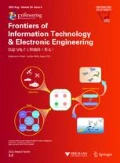Abstract
It is now widely recognized that appropriate measures are required for digital preservation to ensure that digital data can be accessed and used currently and in the future. Among all the risks of digital preservation, format obsolescence is one of the most important. There have been several projects or initiatives dealing with the measurement method of format obsolescence risk, but there has been no mechanism to quantify the preservation risk or durability of digital formats based on a self-improving assessment model, executed with the aid of computers. This paper deals with a methodology for measuring the preservation durability of digital formats, especially for their risk assessment. This method is based on a quantitative assessment model for format risk, and can shift the non-quantifiable knowledge or experiences of field experts to a machine identifiable and processible form, or ‘risk scores’. Results can be recognized and communicated by computers automatically and formally, which can assist in the automatic/semi-automatic risk management for digital preservation, sharing this quantified knowledge among communities. Because technologies are changing quickly, the quantitative assessment model for risks will not be a status quo situation. Thus, also presented is a method to fine tune the quantitative assessment model for risk of formats through a self-learning and self-improving style.
Similar content being viewed by others
References
Chen, H.Y., Zhu, H.K., 2005. A summarization on the China-America Digital Academic Library. J. Acad. Libr., (1):3–6 (in Chinese).
Kenney, A.R., McGovern, N.Y., Botticelli, P., Entlich, R., Lagoze, C., Payette, S., 2002. Preservation risk management for Web resources. D-Lib Mag. [doi:10.1045/january2002-kenney]
Li, C., Ma, N.N., Xing, C.X., Jiang, A.R., 2008. An integrated approach for smart digital preservation system based on Web service. LNCS, 5362:347–350. [doi:10.1007/978-3-540-89533-6_41]
Li, C., Xing, C.X., Dong, L., Huang, M.B., 2009. A Semi-Automatic System for Managing Multiple Digital Preservation Risks of Digital Libraries in China. Proc. 9th ACM/IEEE-CS Joint Conf. on Digital Libraries, p.425. [doi:10.1145/1555400.1555495]
Pearson, D., 2008. AONS II: continuing the trend towards preservation software ‘Nirvana’. New Technol. Libr. Inf. Serv., (1):42–49.
Robnik-Šikonja, M., Kononenko, I., 1997. An Adaptation of Relief for Attribute Estimation in Regression. Proc. Int. Conf. on Machine Learning, p.296–304.
Stanescu, A., 2004. Assessing the durability of formats in a digital preservation environment: the INFORM methodology. D-Lib Mag. [doi:10.1045/november2004-stanescu]
Zhao, J.L., 2004. Australia network information preservation project PANDORA and its enlightenment. Inf. Stud. Theory Appl., 27(5):552–554 (in Chinese).
Author information
Authors and Affiliations
Corresponding author
Additional information
Project supported by the National High-Tech R & D Program (863) of China (No. 2009AA01Z143) and the Research Foundation of the Ministry of Railways and Tsinghua University, China (No. 20091111068)
Rights and permissions
About this article
Cite this article
Li, C., Zheng, Xh., Meng, X. et al. A methodology for measuring the preservation durability of digital formats. J. Zhejiang Univ. - Sci. C 11, 872–881 (2010). https://doi.org/10.1631/jzus.C1001006
Received:
Accepted:
Published:
Issue Date:
DOI: https://doi.org/10.1631/jzus.C1001006




